The Importance of Training (Part 6)
Three training units constitute a substantial part of a painter's daily routine.


3 Ways to Motivate Workers
Remember that even the most motivated employee faces tough days.
Learning to Surf the Uncertainty of Life
See what you can create. Bring some lightness to it, without harshness.
Is paperless payroll right for you?
www.aussiepaintersnetwork.com.au


From the Editor
Hey Everyone,
Welcome to the 130th edition of the Aussie Painting Contractor Magazine.
This month has been as busy as always, we have held Try a Trade Days, attended a Career Expo that we had many applicants looking for a painting apprenticeship and of course trained apprentices out of the APN Training Facility in Salisbury.
I would like to introduce Melissah, she has come onboard this month as our Recruitment Consultant. She has been reaching out to many of you already and has had some great success in placing applicants with employers in the first week of starting. If you are looking for an apprentice, reach out to Mel and she will assist you with your apprentice needs.
The I Got Brushed Program we have been supervising on behalf of MEGT will be close to completion in the next month. We have a couple of very keen applicants looking at getting painting apprenticeships on the Gold Coast. Let us know if you are considering hiring and we will organise a time for an interview.
For the next couple of weeks, I will be travelling through North Qld. I’ll be in Cairns, Townsville, Proserpine and Rockhampton if you want to catch up give me a call or contact the office.
CONTRIBUTORS
• Deepa Bannigidadmath
• Flavio Macau
• Helen Kay
• Jim Baker
• Kayleen Manwaring
• Leo Babauta
• Mary Cairns
• Nigel Gorman
• Robert Bauman
• Sandra Price
EDITOR
Nigel Gorman
Nigel Gorman

nigel@aussiepaintersnetwork.com.au
07 3555 8010
GRAPHIC DESIGNER
J. Anne Delgado
'Til next month, Happy Painting!!



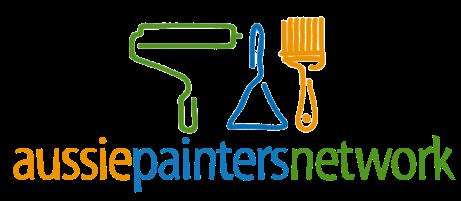





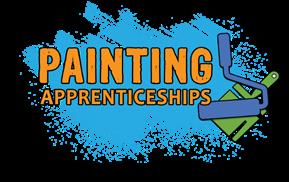

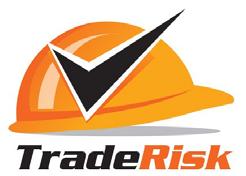



Advertise with us... 1800 355 344 07 3555 8010 info@aussiepaintersnetwork.com.au www.aussiepaintingcontractor.com AUSTRALIA'S ONLINE PAINT EXPERT
Contents
3 Ways to Motivate Workers

23
Why Trade Based Businesses Should Rely on Lawyers, Not Templates or AI, for Contractual Matters
17
Best Bang-for-Buck Insurance for Tradies
Governments are pouring money into housing but materials, land and labour are still in short supply
Is paperless payroll right for you?

27 28 31 32 34 38 39
THE IMPORTANCE OF TRAINING Part 6
THE HISTORY OF PAINT
Making A Positive Difference Is Easier Than You Think!
Five Undesirable Customer Types
Why do I get so much spam and unwanted email in my inbox? And how can I get rid of it?
Industry Idiots
Important Contacts
Opinions and viewpoints expressed in the Aussie Painting Contractor Magazine do not necessarily represent those of the editor, staff or publisher or any Aussie Painters Network’s staff or related parties. The publisher, Aussie Painters Network and Aussie Painting Contractor Magazine personnel are not liable for any mistake, misprint or omission. Information contained in the Aussie Painting Contractor Magazine is intended to inform and illustrate and should not be taken as financial, legal or accounting advice. You should seek professional advice before making business related decisions. We are not liable for any losses you September incur directly or indirectly as a result of reading Aussie Painting Contractor Magazine. Reproduction of any material or contents of the magazine without written permission from the publisher is strictly prohibited.
on
with
Keeping your high performers
top
Career Monitor Learning to Surf the Uncertainty of Life
06
08 10 13
20
3 Motivate Workers Ways to

The question of motivating employees is often on a business owner’s mind. It can be difficult to find ways to genuinely motivate employees at work, and often the old standards— performance-based bonuses, increased rewards and commissions—only work in the short-term, if they work at all. In fact, some tests have shown that the usual motivational tactics aren’t always effective.
So how can you authentically motivate workers?
1. Share positive feedback
Too often, rewards and recognition are based on achievements—increasing sales or closing a big account for example. But your employees do a lot of work that doesn’t gain attention on a spreadsheet. Going an extra mile for a client or showing compassion when dealing with a frustrated customer, for example, enhance your company’s reputation even if they don’t immediately have an effect on your profits.
Create a process through which you gather feedback from your clients. When they share positive comments about your workers, share it with them.
Let them know they made someone’s day, even if it wasn’t directly related to their job. Doing so can increase your employees’ satisfaction, which can be a great motivator. It also shows employees that you— and your customers—appreciate them.
2. Focus on individuals
Yes, your employees are members of a team. But each team member contributes in a way that is unique, and based on their individual skills, goals, and habits. Remember when you’re motivating your team as a whole that the people on it need to feel aligned with the strategies and goals you implement. You need each person to feel that they contribute to and also benefit from the work the team does.
Talk to the individuals to find out what they do and don’t like working on, what their goals are and how the team can help them reach their objectives. Do they want to improve their skill set or try a new role? Do they want a mentor on their team who can help them with professional development? Have one-on-one check-ins and ask questions focused on their individual skill set. Listen to their thoughts and ideas. After all, you hired them for a reason
6 | Aussie Painting Contractor
3. Ask your employees what they want
Business owners frequently develop rewards and recognition programs based either on what they want or by following what other companies do. Rewards are often tied to promotions or financial incentives. These are nice to offer, but they may not appeal to all your employees. Not everyone wants increased work responsibility, for example.
Entrepreneurs often view financial rewards for achieving goals as the main way to motivate employees. Research shows that these tactics may not be as effective as previously thought. There are other things you can do to show your employees you appreciate and value the work they do.

It’s also good to remember that even the most motivated employee faces tough days. In those moments, showing your colleague compassion and offering support can help them feel valued.

If you need a sounding board or ideas to re-invigorate your staff’s motivation, feel free to arrange a FREE No-Obligation Meeting with me. Call my office on 07 3399 8844 , or just visit our website at www.straighttalkat.com.au and complete your details on our Home page to request an appointment.
 Copyright © 2023 Robert Bauman.
Copyright © 2023 Robert Bauman.
Some employees might prefer additional vacation days, enhanced benefits, free lunches, flex time at work, or other bonuses that aren’t tied to their salary or job title. Talk to your employees. Ask what motivates them and create rewards and bonuses based on what they identify as being most valuable to them.
2023 October Issue | 7
Keeping your high performers on top with Career Monitor

Do you have key employees who you know you can’t afford to lose? High performers get the job done with little interference, so sometimes we focus our energy elsewhere, e.g. on poor performers because the perception is that they are more in need of our attention. However, if we fail to check in with the staff who excel, and understand what is needed to keep them engaged and happy in their roles, we risk losing them. And a surprise resignation wouldn’t be so great for business!
What can you do? Career Monitor is a highly effective retention-focused tool that gives you key insights into factors that have enticed employees to remain in your business, as well as factors that could potentially put them at risk of leaving – both at an individual role, and business level.
Career Monitor helps employers:

• Identify risk factors around potential key performers
• Build trust and engagement to boost retention and
• Plan for future resourcing requirements with an understanding of your star employees’ needs
If you can’t afford to lose your top performers and want to know what will keep them happy and engaged, give us a call and we can talk more about how Career Monitor can help.
Mary Cairns
Career Monitor helps employees to identify:
• if they are on track with expectations;
• if they are maximising their potential; and
• what they need to do to build towards even greater growth and advancement in the future.
Experienced in strategic planning (marketing & communications and driving business growth), leading specialist sales teams, and managing corporate client relationships

8 | Aussie Painting Contractor

Learning to Surf the Uncertainty of Life

When things are changing rapidly, and an overwhelming number of things are coming at you, it can be tough to navigate.
Anyone who is up to anything big will have a lot going on. Lots of emails and messages, lots of tasks, lots of meetings and calls, lots of things changing every day. Lots of uncertainty.
How do we navigate the uncertainty of all of this?
The visual metaphor that works for me is surfing. I'm going to talk about how to surf uncertainty, and how to learn to surf uncertainty.
Surf Uncertainty
What we really want is a simple, straightforward path. No uncertainty, no tough decisions, nothing overwhelming. Simple, clear, easy path. But life is full of uncertainty, and full of abundance. That’s what makes it so beautiful!
So I like to imagine life as an ocean, full of unpredictable waves. If I were a surfer (I’m not), I wouldn’t curse the overwhelming number of waves, I’d be psyched that there are waves! That’s what I’m here for.
And I wouldn’t moan about how unpredictable the waves are, that’s what makes it fun!
So the way I might approach the uncertainty of waves is:
• Relish a new wave coming my way
• Jump on the surf board as the wave approaches, reading the wave as best I can
• Have a direction I’d like to go, but;
• Also navigate the wave as it breaks, learning to go with what I’m given
• Try again if I’m knocked off
This applies to my life, of course. Each day is a new wave, and the opportunity is to get excited by it, jump on and ride it, set a direction but also flow with what comes up.
The attitude is one of ease and acceptance of uncertainty and change, with determination toward a direction that I’ve chosen. There’s trust in myself to be able to navigate change.
What would that be like for you, if you approached every day with this relaxed but determined attitude toward the uncertainty of your life?
10 | Aussie Painting Contractor
How to Learn to Surf Uncertainty
This kind of uncertainty surfing takes practice. It’s not as simple as saying, OK, just surf and be relaxed and flow! That might have some immediate impact, but long-term impact will mean practice.

The most important place to practice is at our edge where things aren't so easy, but also not so challenging that it feels too impossible. Where is your edge right now? Maybe it’s chaotic mornings, maybe it’s taking on a challenging project, maybe it’s around difficult conversations.
Then when you find this edge, notice that you’re feeling uncertainty. How are you relating to that uncertainty, and the resistance and fear that come up in uncertainty? Do you hate it, wish you didn’t feel it? What do you try to do from that uncertainty? How does it feel? Bringing curiosity like this gives you awareness and the opportunity to work with it.
Now when you notice the uncertainty, see if you can "take a surf with ease and flow” approach. How can you make this easy? How can you flow in the direction you’d like? How can it be fun, with determination?
Play with it! See what you can create. Bring some lightness to it, without harshness.
Then as you practice, notice that changes aren’t necessarily anything to stress about, but simply something to flow with.
How can you still go in the direction you want as you flow?
How can this be the most amazing moment, this moment of change and flow?
Leo Babauta ZEN HABITS
2023 October Issue | 11

Best Bang-for-Buck Insurance for Tradies
Running a trades business is full of risks. Some risks you can manage on your own, and some you can’t.
For those you can’t manage on your own, you manage them via business insurance.
But if you don’t have an unlimited budget to spend on insurance (no one does!) what are they key forms of insurance that will provide the best bang-for-buck?
In this guide we’ll take a look at the tradies insurance types that provide the most value for self-employed tradies.
Our top three:
• Public Liability Insurance
• Tool Insurance
• Personal Accident Insurance
Public Liability Insurance
Imagine being able to cover a five-million-dollar risk for around five hundred bucks?
That’s the reality with public liability insurance!
Any self-employed tradie would be mad to operate without public liability insurance at almost any cost,
but in fact it is one of the cheapest business insurance types you’ll find.

Public liability insurance covers a tradie where your business activities result in property damage or personal injury (including death) to another person.
Most claims that tradies make on public liability insurance are relatively small, ranging from a few grand up to maybe $50k or $100k for something more serious.
So you might be thinking, why do we have to insure for a minimum of $5 million?
Whilst claims of this size certainly aren’t common, they have happened in the construction space.
Usually such claims involve death or permanent disability that your work has caused. Most tradies will thankfully go through their careers without ever being involved in such an event, but they can and do happen.
You could probably cover a claim for a couple of grand out of your back pocket, or extend the mortgage for a $100k claim, but what if you were hit with a milliondollar claim?

2023 October Issue | 13
That’s the sort of claim that could cost you your house, your business, and sadly more in some cases.
For $500* a year, you’d be mad not to have public liability insurance. It is without a doubt the best bangfor-buck insurance for a tradie.

*$500 is just a round number we’ve used. Policies for standard trades with a single worker, with no hazardous works or working locations can be had for this amount. Larger businesses, or those with other risk factors will be higher.
Tool Insurance
This is one that is bound to result in debate!
When tool insurance is raised in discussion on the various tradie Facebook groups, you’ll find plenty of people saying it’s not worth it.
They’ll tell you that you’re better off putting the money aside and using it to replace the tools if the worst does happen.
That’s fair enough, but it all depends on if or when your tools get knocked off.
Their argument is, that if it costs $400 a year for $5k worth of tool insurance, you could just put that money
aside and you’d have enough to replace the tools every twelve years.
Sure. If your tools never get stolen, or are only stolen once every twelve years, that works perfectly fine.
But what if your tools are stolen in year one? You’ve paid $400 and saved yourself $5,000. That is pretty good bang-for-buck!
We’ve had clients at Trade Risk who have had their utes or trailers cleaned out more than once within a couple of years. In their case, having tool insurance has saved them many thousands of dollars.
Maybe those guys will keep paying tool insurance every year for the next twenty years and never suffer another theft. Or maybe they’ll get cleaned out another one or two times… Who knows? That’s why smart operators insure their gear.

14 | Aussie Painting Contractor
Personal Accident Insurance
We’re going to cap this list at three different types of tradies insurance, and number three on the list is personal accident insurance.
You might be more familiar with the term income protection. This is a very similar form of insurance, but is available via financial planners rather than insurance brokers like Trade Risk.

The cost of personal accident insurance will vary greatly depending on a host of different factors including your age, your occupation and the various options you choose for the policy.
But let’s say you’re a relatively young and healthy electrician, and you’re paying $2,000 a year for a policy which covers you for $1,000 a week.
You might tell yourself that you never get sick and you’d never hurt yourself badly enough to be off work for more than a couple of weeks.
Most of us could get through a few weeks without an income, so why bother with insurance?
But what if you smashed up your leg and couldn’t work for a couple of months? What if you suffered a serious injury and couldn’t work for a year or more?
With personal accident insurance being able to pay out over multiple years whilst you’re unable to work, that $2,000 premium could turn into a payout worth $100k+ whilst you recover.
That income might be the difference between being able to pay the mortgage and feed the family, or having to rely on Centrelink benefits and sell the house…
Pack ‘em up!
Packaged up with Trade Risk those policies might only cost you a couple of grand per year, but could provide an enormous amount more in benefits if and when something went wrong.

We totally get it though… You could spend $3k on business insurance that you might never claim on, or you could spend it on a nice little weekend away with the family.
The second option sure seems a lot more appealing, but in business you have to think long term.
Think about what you’re trying to build with your business. If you’re trying to build something of value, trying to grow your wealth and ultimately your lifestyle with your family, you need to protect it.
What’s the point of working so hard if a single incident could send you back to starting from scratch?
We’re not telling you to buy every single insurance policy under the sun though…
Spend your insurance budget wisely and insure against the things that have the biggest potential to hurt you financially. Our experienced brokers can help you with this.
We’ll help you to get the best bang-for-buck on the insurance types that really matter to you.
2023 October Issue | 15

Governments are pouring money into housing but MATERIALS, LAND AND LABOUR ARE STILL IN SHORT SUPPLY
As Australia’s housing affordability crisis worsens, governments are spending more on housing.
Victoria’s Andrews government has announced a suite of reforms (such as boosting social housing and making planning processes faster) in an effort to get 800,000 extra homes in Victoria over the next decade.
Federally, the Albanese government’s A$10 billion Housing Australia Future Fund, or HAFF, has passed the Senate with the help of the Greens, who supported the bill in exchange for another A$1 billion for social housing.
And this year’s federal budget has expanded eligibility for the Home Guarantee Scheme so more people can buy a home with a smaller deposit.
But is Australia ready for a house construction boom?
Supply chain constraints say no. Ballooning construction costs and labour shortages have already claimed well-known building firms across the country. Delivering thousands of extra new homes in the coming years will not be easy.


Materials are hard to get Building a home requires the right materials at the right time. But many building materials are in short supply.
Timber is a good example. The Master Builders Association highlights there are still pressures on timber and wood supplies.

This imbalance between supply and demand for construction materials can be traced back to the HomeBuilder program, which saw over 138,000 Australians applying for a grant to build or renovate.
The number of new dwellings commenced went from 41,855 in September 2020 to a peak of 67,306 in July 2021 – an increase of 60% in less than a year.
Typically, a spike in demand is met by imports. But soaring shipping costs during the pandemic conspired with restrictions to timber imports from Russia to send global markets into disarray.
Tim Reardon, Chief Economist for the Housing Industry Association reckons housing supply issues will not get any better soon. The federal government’s National Housing Finance and Investment Corporation expects housing supply will only recover by 2025-26.
Demand pressures will continue. As it is, there are lots of unfinished homes around the country.
2023 October Issue | 17
Labour and land are also in short supply Building a home is labour intensive. Finding roofers, bricklayers, carpenters, tilers, landscapers and other construction workers has not been easy.
Australia’s record low unemployment rates and a global rise in labour shortages have made it hard for builders to find the workers they need to finish jobs. Delays are common.
Some skill sets are in even higher demand, as workers flock to oil and gas, mining, and infrastructure projects. In Western Australia, for example, research has shown a shortage of construction managers, handy persons, and civil engineering professionals.

Then, there is the question of land. Greenfield projects (new developments on the city fringes) typically see fast approvals, fast sales, and good profit.
But suburbs alone cannot deliver the demand that is coming, thanks to the Housing Australia Future Fund and the other government initiatives.
There is a growing consensus more has to be done to increase urban density (in other words, apartments) next to mass transit hubs.
But this isn’t easy either. Not-in-my-backyard (NIMBY) critics abound and demand for standalone houses remains strong as people pursue the “great Australian dream” of a large house on a large block of land.
So how can we strengthen supply?
These issues in materials, labour, and land will not solve themselves. Pouring more money into the housing market without addressing supply shortages will only increase prices.
So, what initiatives can really address the housing supply crisis? Options include:
• reducing import taxes on materials like construction timber and steel frames to boost short-term supply (while adhering to long-term strategies to address future demand)

• supporting new technologies in the construction industry (the federal government’s Accelerate Adoption of Wood Processing Innovation program, which enables the use of innovative technology for timber production, is one example)
• increasing skilled migration to boost labour supply (Western Australia’s Construction Visa Subsidy Program, which targets skilled migrants to the construction sector, shows what’s possible)
• embracing manufactured homes (modular construction, for example, can increase labour productivity, reduce costs and mitigate the effects of weather delays)
• making it easier to release land for development, especially in urban areas (for example, the Victoria government is investing $40 million in red-tape busting measures).
The housing crisis in Australia is far from over. Without coordinated action to increase supply, government grants will have little practical effect on house affordability anytime soon.
Flavio Macau
Associate Dean - School of Business and Law, Edith Cowan University
18 | Aussie Painting Contractor
Deepa Bannigidadmath
Lecturer, Edith Cowan University






A D V A N T A 6 [ Eliminate the B.S. in your business and your mates will be asking... "how do you have time to go fishing on the weekend?" Tradies Advantage offers you the COMPLETE FINANCIAL SOLUTION under one roofbookkeeping and accounting at a monthly FIXED price. • Get your invoices out on time • Stop ch asing debtor s and get paid quicker • Better manage rece ipts and paperwork • Lodge your BAS on time - don't cop a fine • Stop mi ssing deductions • Plan ahead and measure how you're going CONTACT US 07 3333 2415 info@tradiesadvantage.com.au 191 Wynnum Road, Norman Park QLD 4170
Is paperless payroll right for you?

When you think about payroll, you might still picture handing out paperwork and envelopes to employees. Despite direct deposit becoming the norm, there’s still a substantial amount of paper involved in the process.
Payroll is now transitioning into the digital realm, and for good reasons. Going digital offers numerous advantages for both employers and staff. Discover why transitioning to paperless payroll might be the right decision for your business.
1.
Your employees can log into the system to access everything they need, anytime and anywhere. Pay stubs, work hours, and more are readily available.
They won’t have to contact a specific department for assistance, even for questions about time off or sick days. All this information is easily accessible to them. When everyone can access what they need, tasks become simpler. This approach also means that individuals who used to provide information can now focus on their tasks without interruptions.
2.
Manual payroll processing often leads to delays, which are a typical part of business operations. However, going digital eliminates these issues.
Automated operations mean you won’t face delays due to holidays or slow mail. Additionally, online distribution ensures timely payments for everyone. The risk of errors decreases as well. Removing human error from the equation reduces the time spent on correcting mistakes or investigating discrepancies.
3.
Paperless payroll systems prioritize security. Employees have their unique usernames and encrypted passwords for accessing a secure online portal. Some even include two-factor verification for added security.
Storing information online reduces the risk of losing sensitive documents. Shredding confidential data also becomes unnecessary. Pay information remains securely stored on the portal, accessible only to authorized personnel. The likelihood of fraud is significantly reduced.
20 | Aussie Painting Contractor
Enhanced Employee Empowerment
Improved Convenience and Elimination of Delays
Robust Security
4. Cost and Time Savings
Adopting paperless payroll results in tangible cost savings by reducing expenses related to paper, postage, ink, and toner required for paper pay stubs. These savings can be substantial. However, the most significant savings come from the reduced time needed to manage payroll.
5. Environmental Benefits
Paperless payroll significantly reduces waste. You won’t generate stacks of paper, envelopes, or supporting documents that accumulate in filing cabinets before being discarded.
In Conclusion
There are numerous advantages to embracing paperless payroll, and it’s a favored system for both employees and employers. When considering this transition, evaluate your business and employee needs. If the benefits mentioned above align with your requirements, it might be time to consider making the switch.


If you need assistance, book a strategy session HERE to see how we can improve your bottom line.
With automation in place, tasks like calculating work hours, overtime, sick pay, and taxes no longer require manual effort. Your software handles these processes efficiently.
Sandra Price tradiebookkeepingsolutions.com.au
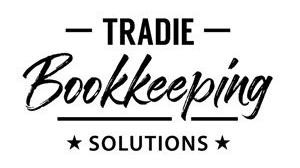

2023 September Issue |

Why Trade Based Businesses Should Rely on Lawyers, Not Templates or AI, for Contractual Matters
In the rapidly evolving business landscape, tradebased businesses are often tempted by the apparent ease and efficiency of template contracts or Artificial Intelligence (AI) generated advice/documents. While these methods might appear cost-effective and fast, they can lead to unforeseen consequences, particularly when dealing with complex, state-specific laws and industry regulations. This is where the value of an experienced business lawyer truly shines.
State-Specific Laws:
Every state in Australia has its own unique set of laws, regulations, and legal procedures for trade based businesses which must be adhered to. These laws can significantly influence how you run your business and draft your contracts. A template contract or AI-generated document is unlikely to consider these specific requirements, potentially leaving your business exposed to legal issues and potentially significant fines or loss of licences.
An experienced business lawyer, on the other hand, understands these differences and can tailor your contracts accordingly to ensure you are protected as much as possible. This is especially crucial if your trade-based business operates across multiple states.

Adhering to Industry Regulations:
Beyond state laws, trade-based businesses often have to comply with specific industry regulations and standards. Whether it’s specific legislative requirements, health and safety protocols, licensing requirements, or trade practices, these regulations need to be clearly defined and adhered to in your contracts.
Once again, template contracts or AI-generated documents may lack these specifics. In contrast, a dedicated lawyer will ensure your contracts align with the necessary industry standards, keeping your business compliant and safeguarded.
2023 October Issue | 23
Understanding the Limitations of Templates:
Using a template contract is a bit like buying a suit off the rack. It might fit reasonably well, but it will never match the tailored fit of a suit designed specifically for your unique measurements. In the same way, template contracts can’t fully cater to the distinctive needs of your business.
Furthermore, the cost savings of template contracts may be illusory. If a dispute arises, a poorly drafted contract could end up costing far more in litigation expenses than the initial savings gained from avoiding lawyer fees.
Templates are not without their uses, but when it comes to drafting certain legal documents, they can fall short. The primary issue is their ‘one-size-fits-all’ nature. Templates are typically designed to cover general scenarios and might miss critical nuances unique to your business or industry.
Importantly, these methods cannot replace the human understanding and strategic thinking a lawyer brings to the table. A lawyer’s ability to comprehend your specific needs, the unique context of your industry, and anticipate potential issues is simply irreplaceable.
Understanding the Limitations of AI:
Using AI for legal document creation is very dangerous. ChatGPT for example is not geared up whatever to give legal advice – it even tells you that if you ask any legal questions.
Again, if a dispute arises, a badly drafted contract could be simply invalid and end up costing far more in litigation expenses than the initial savings gained from avoiding paying lawyers.
The Value of a Lawyer:
This is where a business lawyer can make all the difference. A lawyer can craft a bespoke contract that:
Lawyers bring a deep understanding of the law and a wealth of experience in contract drafting. They can anticipate potential issues and protect your business from legal pitfalls that a template or AI might miss. They can also ensure that your contracts are fair, balanced, and aligned with your business objectives.

In addition, a lawyer can explain the contract to you in plain English. They can highlight any potential risks and opportunities, helping you make informed decisions about your business.
• Takes into account the unique aspects of your business and its operations.
• Complies with the specific laws of the state in which your business operates.
• Meets the requirements set by any regulatory bodies governing your industry.
In a world where shortcuts and quick fixes are often tempting, it’s important to understand the value of investing in professional legal counsel. A business lawyer’s role is not just to draft contracts, but to offer strategic advice, help navigate complex laws and regulations, and ultimately, protect your business from potential legal disputes. For trade-based businesses, this bespoke legal support can be the difference between a thriving enterprise and a costly legal nightmare. For more details on the future of law and AI see our blog on Will AI Replace Lawyers.
So, before you opt for the seemingly easy route of templates or AI for your contracts, consider the longterm advantages of having a skilled business lawyer in your corner. After all, when it comes to the law, it’s not just about getting it done – it’s about getting it right.
To get further information as to how Rise Legal can assist you and your business, book in for a free 15-minute consultation with one of our lawyers.

24 | Aussie Painting Contractor


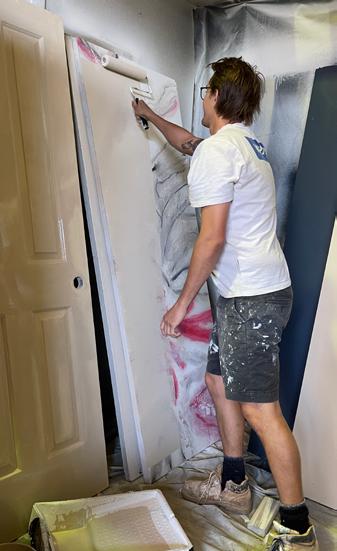

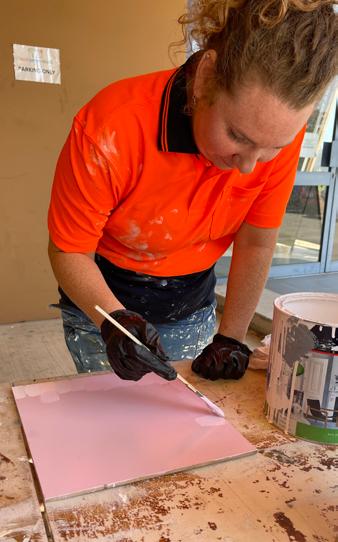
THE IMPORTANCE OF TRAINING Part 6
Similar to the preceding five parts in this series of articles, we are now delving into crucial aspects often overlooked by many painting contractors as we venture into more specialized areas. These areas encompass the utilization of painting and decorating tools and equipment, the proper handling and storage of painting and decorating materials, as well as the application of paint through brushes and rollers.
Although these three components of the training program may appear relatively straightforward at first glance, a closer examination reveals that they constitute a substantial portion of the future training needs within our industry.
When it comes to using tools and equipment, there exists a wide array of tools, extending beyond manual tools to encompass various types of sanders such as belt sanders, high-pressure washers, and water treatment units. It's worth noting that I've yet to encounter an apprentice using a belt sander on a job site, underscoring the necessity for proper training in its safe operation.
Regarding the handling and storage of painting and decorating materials, students are required to comprehend the associated hazards and the correct storage methods for various paint products, including two-pack paints, textured coatings, as well as sol-
vents like turpentine and methanol, among other commonly used products on construction sites.
When it comes to applying paint using brushes and rollers, this entails not only the application of multiple types of paint, including water-based, oil-based, solvent-based and two-pack paints, but also a deep understanding of the rationale behind specific application sequences and the optimal thickness for applying these products.
In summary, these three training units constitute a substantial part of a painter's daily routine, often taken for granted. This underscores the critical importance of comprehensive training to equip future tradespeople with problem-solving skills and a profound understanding of potential challenges and their solutions.
If you suspect that your apprentices may not be receiving thorough training, please don't hesitate to reach out. We would be delighted to explore how we can assist in addressing these training needs.
 Nigel Gorman nigel@aussiepaintersnetwork.com.au
Nigel Gorman nigel@aussiepaintersnetwork.com.au
2023 October Issue | 27
THE HISTORY OF PAINT
Throughout recorded history, humans have had the desire to decorate their living space. As long ago as 38,000 B.C., people used paint made from soot, earth, and animal fat to adorn the walls of their caves. In ancient Egyptian society, painters mixed ground glass or semiprecious stones, lead, earth, or animal blood with oil or fat.

In modern times, we don’t think twice about painting the interior or exterior of a house. In the days of the American colonies, however, such an act opened a person up to serious social disapproval. The Pilgrims, in accordance with their puritanical belief system, thought a colourful home expressed vanity and an excess of happiness. This idea wasn’t just bandied about; it was made law. A preacher in the Charlestown colony painted the inside of his house in 1630 and was subsequently accused of sacrilege, an actual crime in colonial society.
Between the 1600s and 1800s, most house paint used either oil or water as a base. Some colours worked better in oil, while water suited others better; cost and durability were also part of the water-or-oil equation. Painters tended to use water based paints on ceilings and plaster walls, while oil paint was best for decorating joinery.
Painters of the time mixed pigment and oil, often with a mortar and pestle, to create a stiff paste – a method we still use today. The point of grinding pigment was to disperse it as fully as possible in oil. This was done by hand until the 1700s, which exposed many painters to white-lead powder and afflicted them with lead poisoning. Lead paint was popular mainly because it was durable; the stuff could retain color for centuries.
In the 18th century, England was a hive of paintmaking innovation. Marshall Smith engineered a machine for the grinding of colours in 1718, and while we don’t know what it looked like or how it worked, the device sparked a countrywide interest in grinding pigment more efficiently. In 1741, the paint-making company Emerton and Manby boasted that it ground colours in “Horse-Mills,” which allowed the business to sell its product at unusually low prices.
By the beginning of the 1800s, steam powered most paint mills. Around this time, white pigment made with nontoxic zinc oxide – a viable alternative to poisonous lead – was invented in Europe.
Making paint in large quantities was easier than ever, especially given the increased use of linseed oil as an inexpensive binder. In 1866, Sherwin-Williams, which would become one of the largest global paint makers, opened for business. The company invented ready to-use paint, releasing its first product, raw umber in oil, in 1873. Several years later, co-founder Henry Sherwin came up with a re-sealable tin can. Not to be outdone, another paint-industry giant, Benjamin Moore, began selling its wares in 1883. In 1907, the company hired its first chemist and started a research department. Among Benjamin Moore’s many innovations, its computerized colour-matching system, introduced in 1982, remains the most influential and impressive.
Paint production didn’t undergo another significant development until the mid-20th century, during World War II, when linseed oil became scarce. In response to the shortage, chemists mixed alcohols and acids to make alkyds (artificial resins). These synthetics were cheap to make, long-lasting, and excelled at holding colour, so they quickly replaced oil as a paint base.
Thanks to modern paint technology there’s now paint for every surface and situation. Plus manufacturing has evolved to meet more recent demands on the performance of paint products; in relation to both their impact on us and the planet, as well as their quality and durability. Advancements have resulted in more sustainable and less toxic paints as well as effective recycling techniques. Low to zero VOCs, water-based, textured, UV and high heat resistant paints all respond to health and environmental concerns, providing better products for the painter and the consumer.
Jim Baker
Author of ‘How To Become A Really Successful Painter’ www.mytools4business.com
28 | Aussie Painting Contractor

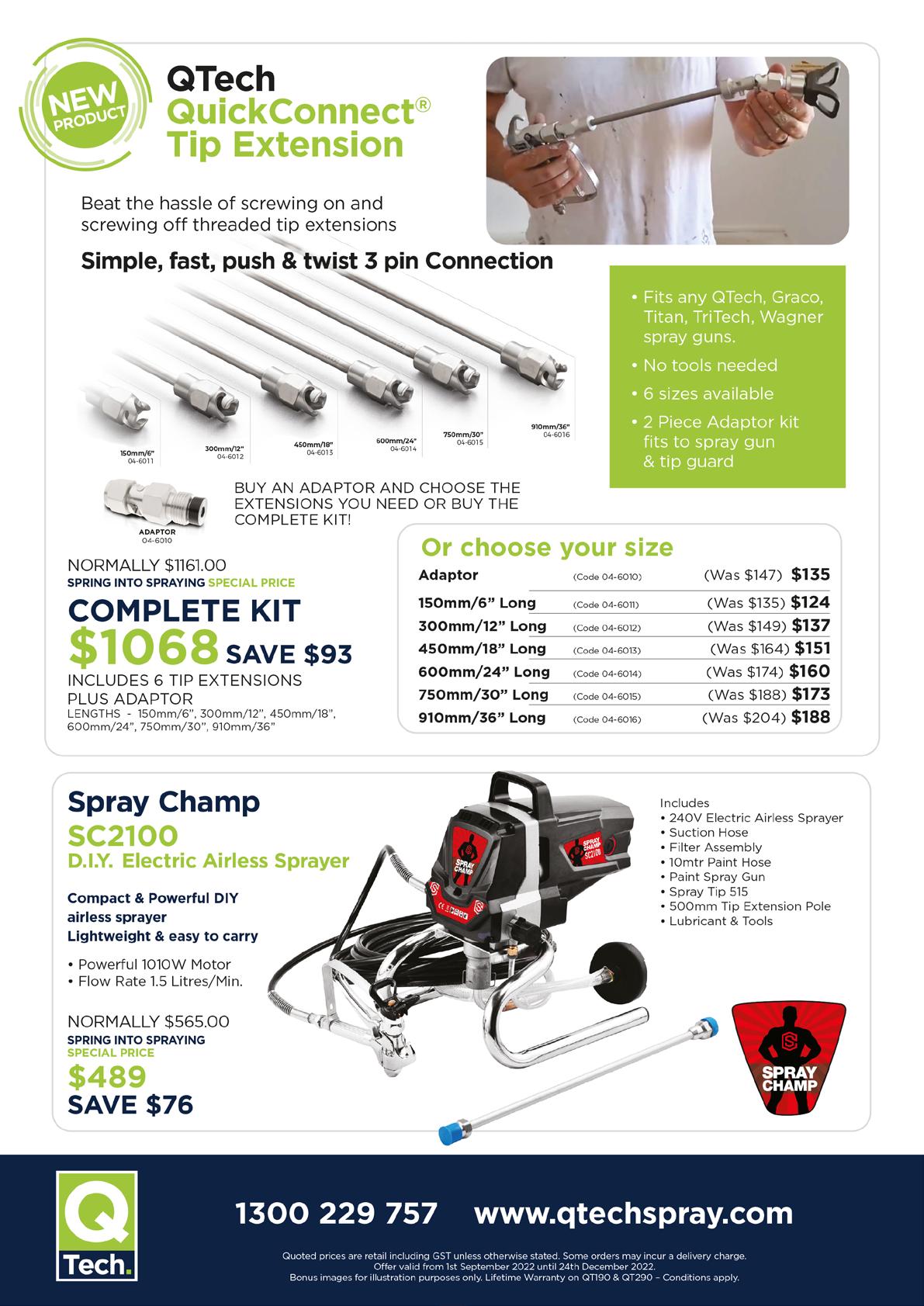
Making A Positive Difference Is Easier Than You Think!
It astounds me how difficult some people seem to think making a difference to another’s life can be.
Most people who are networking feel that they are creating connections for their business only, but forget that by supporting people in achieving their needs, in all areas of their lives, is what comes first.

How do you make a difference in other people’s lives?
Are you listening to what others are looking for?
Do you listen to what they are really asking when they speak with you?
No matter whom we are or what we do, we all have needs that are not business related. So, do you listen to what people are saying in regards to what they are looking for in their life to make it easier? It may be a good trade’s person, a book keeper or accountant, a great place to eat out for a special occasion, where to get some good stationery or something for their computer, or where to get a great Christmas present for their grandchildren.
As you can see, people talk about all sorts of things that may not be anything to do with their business. This doesn’t make the need any less than if it was
business related! So, you can make a difference to many people’s lives by just listening to what they are looking to find and the contacts they need to make.
At this time we are fortunate for the creation of Social Media. We are being given a wonderful opportunity to connect with more people, getting to know more about the ‘friends’ whom we personally know and are in our network. This gives us the chance to support even more than we could before.
To develop a good relationship for future success it is imperative that you are seen as someone who listens to the needs of your contacts, support them to find what they are looking to find and become known as a person with good contacts.
Building relationships cover all areas, not just business. So, think again about how you can help others to achieve what they need outside of their businesses by helping them with finding the contacts they are looking to find. This is why learning more about your clients and contacts can support you to achieve what you are looking to find too!
“Be the supporter that your network needs.”
2023 October Issue | 31
Five Undesirable Customer Types
Every businessperson knows that not all customers are created equal. Some customers are loyal, while others will stray if they're offered a slightly lower price elsewhere. Some clients are demanding, while others only call when they wish to place an order.
Every business must deal with a variety of customers. But there are certain types of customers who do more harm than good to your business - they drain your resources while adding little to your revenue.
Here are five undesirable customer types that every businessperson should learn to recognise.
1. The customer who returns most of their purchases. Return policies are intended to offer customers a reasonable period of time in which to reconsider the purchase decision. However, some customers abuse such policies. Some buy a product (such as clothing) with the intention of using it only once or twice and then returning it. Others buy two similar items with the intention of comparing them, keeping only one, and returning the other. Such customer behavior
increases staffing costs and warehousing expenses, and it can strain your relationships with suppliers.

2. The customer who makes unreasonable demands on your customer service staff. If every little problem that the customer encounters with a product (such as computer hardware or software) leads to a call to your customer care department, the resulting personnel costs may ultimately exceed the revenue resulting from the original purchase.
Customers who behave this way - instead of consulting the instructional documentation and/or the frequently asked questions - also reduce the standard of service available to other customers by clogging the phone lines.
3. The customer who complains publicly about your company's products or services. The growing visibility and influence of social media have made this type of customer more dangerous than ever. This is especially true if your business is a large and well-known company. Social media sites like YouTube and Twitter give disaffected customers the means to broadcast their concerns to a very large audience.
32 | Aussie Painting Contractor
The customer who unreasonably takes advantage of special offers or incentive deals. If a customer repeatedly signs up for a service to take advantage of a low price introductory offer, and then cancels when the introductory period comes to an end, the customer is not helping your business succeed. Such customer behaviour may be perfectly legal, but it is nevertheless outside the boundaries of appropriate contractual interactions.
5. The client in a B2B (business to business) supplier arrangement who constantly makes demands of your sales representative, takes advantage of free delivery by placing numerous small orders (in order to reduce inventory costs), or frequently threatens to take their business elsewhere if they don't get special deals. At a certain point, it is necessary to acknowledge that such clients are more trouble than they're worth.
After a businessperson identifies a customer (or client) as undesirable, next stage is to develop an appropriate response. Where possible, try to educate the customer in a respectful and courteous manner- about reasonable and acceptable interactions in the marketplace. If this fails, you may have to consider "firing" the customer.
Shedding your business of undesirable customers has multiple positive impacts - in addition to improving the bottom line, it improves employee morale and allows you to focus resources on other customers.
tradiebookkeepingsolutions.com.au


4.
Why do I get so much spam and unwanted email in my inbox? And how can I get rid of it?
Spam might not have brought an end to the internet or email, as some dire predictions in the early 2000s claimed it could – but it’s still a massive pain.
Despite all the spam being removed by spam-filtering technologies, most people still receive spam every day. How do these messages end up flooding our inboxes? And are there any legal consequences for the senders?
What is spam?
The Organisation for Economic Co-operation and Development (OECD) noted in 2004 “there does not appear to be a widely agreed and workable definition for spam” across jurisdictions – and this remains true today.
That said, “spam” generally refers to unsolicited electronic messages. These are often sent in bulk and frequently advertise goods or services. It also includes scamming and phishing messages, according to the OECD.
Most people think of spam in the form of emails or SMS messages. However, what we now call spam actually predates the internet. In 1854, a spam telegram was sent to British politicians advertising the opening hours of dentists who sold tooth-whitening powder.
The first spam email came more than 100 years later. It was reportedly sent to 600 people on May 3 1978 through ARPAnet – a precursor to the modern internet.
As for how much spam is out there, the figures vary, possibly due to the various definitions of “spam”. One source reports the average number of spam emails
sent daily in 2022 was about 122.33 billion (which would mean more than half of all emails were spam). As for text messages, another source reports a daily average of 1.6 billion spam texts.
Where do spammers get my details?
Each time you enter your email address or phone number into an e-commerce website, you may be handing it to spammers.

But sometimes you may even receive spam from entities you don’t recognise. That’s because businesses will often transfer customers’ contact information to related companies, or sell their data to third parties such as data brokers.
Australia’s Privacy Act 1988 somewhat limits the transfer of personal information to third parties. However, these laws are weak – and weakly enforced.
Some entities also use “address-harvesting” software to search the internet for electronic addresses that are captured in a database. The collector then uses these addresses directly, or sells them to others looking to send spam.
Many jurisdictions (including Australia) prohibit these harvesting activities, but they are still common.
Some entities also use “address-harvesting” software to search the internet for electronic addresses that are captured in a database. The collector then uses these addresses directly, or sells them to others looking to send spam.
Many jurisdictions (including Australia) prohibit these harvesting activities, but they are still common.
34 | Aussie Painting Contractor


Is spamming against the law?
Australia has had legislation regulating spam messaging since 2003. But the Spam Act surprisingly does not define the word “spam”. It tackles spam by prohibiting the sending of unsolicited commercial electronic messages containing offers, ads or other promotions of goods, services or land.
However, if the receiver consented to these types of messages, the prohibition does not apply. When you buy goods or services from a company, you will often see a request to click on a “yes” button to receive marketing promotions. Doing so means you have consented.
On the other hand, if your phone or inbox are hit by commercial messages you haven’t agreed to receive, that is a breach of the Spam Act by the sender. If you originally signed up to receive the messages, but then unsubscribed and the messages kept coming after five business days, that is also illegal. Senders must also include a functioning unsubscribe facility in every commercial message they send.
Spammers can be penalised for breaches of the Spam Act. In the past few months alone, Commonwealth Bank, DoorDash and mycar Tyre & Auto were fined more than A$6 million in total for breaches.
However, most spam comes from outside Australia where the laws aren’t the same. In the United States spam is legal under the CAN-SPAM Act until you opt out. Unsurprisingly, the US tops the list of countries where the most spam originates.
Although spam sent to Australia from overseas can still breach the Spam Act – and the Australian Communications and Media Authority (ACMA) co-operates with overseas regulators – overseas enforcement actions are difficult and expensive, especially if the spammer has disguised their true identity and location.
It’s worth noting that messages from political parties, registered charities and government bodies aren’t prohibited – nor are messages from educational institutions to students and former students. So while you might consider these messages as “spam”, they can legally be sent freely without consent. Factual messages (without marketing content) from businesses are also legal as long as they include accurate sender details and contact information.
Moreover, the Spam Act generally only covers spam sent via email, SMS/MMS or instant messaging services, such as WhatsApp. Voice calls and faxes aren’t covered (although you can use the Do Not Call Register to block some commercial calls).
Staying safe from spam (and cyberattacks)
Spam isn’t only annoying, it can also be dangerous. Spam messages can contain indecent images, scams and phishing attempts. Some have malware (malicious software) designed to break into computer networks and cause harm, such as by stealing data or money, or shutting down systems.
The Australian Cyber Security Centre and ACMA provide useful tips for reducing the spam you get and your risk of being hit by cyberattacks. They suggest to:
1. use a spam filter and block spammers – email and telecommunications providers often supply useful tools as part of their services
2. unsubscribe from any emails you no longer want to receive – even if you originally agreed to receive them
3. remove as much of your contact details from websites as you can and always restrict the sharing of your personal information (such as name, birth date, email address and mobile number) when you can – beware of pre-ticked boxes asking for your consent to receive marketing emails
4. install cybersecurity updates for your devices and software as you get them
5. always think twice about opening emails or clicking on links, especially for messages promising rewards or asking for personal information –if it looks too good to be true, it probably is
6. use multi-factor authentication to access online services so even if a scam compromises your login details, it will still be difficult for hackers to break into your accounts
7. report spam to your email and telecommunications providers, and to ACMA.
Kayleen Manwaring Senior Research Fellow, UNSW Allens Hub for Technology, Law & Innovation and Senior Lecturer, School of Private & Commercial Law, UNSW Law & Justice, UNSW Sydney
2023 October Issue | 37

38 | Aussie Painting Contractor
IMPORTANT Contacts 2023 October Issue | 39 Aussie Painters Network aussiepaintersnetwork.com.au National Institute for Painting and Decorating painters.edu.au Australian Tax Office ato.gov.au Award Rates fairwork.gov.au Australian Building & Construction Commission www.abcc.gov.au Mates In Construction www.mates.org.au Workplace Health and Safety Contacts Cancer Council Australia Ph. 0430 399 800 Ph. 1300 319 790 Ph. 13 72 26 / Ph. 13 28 65 Ph. 13 13 94 Ph. 1800 003 338 Ph. 1300 642 111 Comcare WorkSafe ACT Workplace Health and Safety QLD WorkSafe Victoria SafeWork NSW SafeWork SA WorkSafe WA NT WorkSafe WorkSafe Tasmania comcare.gov.au worksafe.act.gov.au worksafe.qld.gov.au www.worksafe.vic.gov.au www.safework.nsw.gov.au www.safework.sa.gov.au commerce.wa.gov.au/WorkSafe/ worksafe.nt.gov.au worksafe.tas.gov.au 1300 366 979 02 6207 3000 1300 362 128 1800 136 089 13 10 50 1300 365 255 1300 307 877 1800 019 115 1300 366 322 ACT NSW NT QLD SA VIC WA actcancer.org cancercouncil.com.au cancercouncilnt.com.au cancerqld.org.au cancersa.org.au cancervic.org.au cancerwa.asn.au (02) 6257 9999 (02) 9334 1900 (08) 8927 4888 (07) 3634 5100 (08) 8291 4111 (03) 9635 5000 (08) 9212 4333
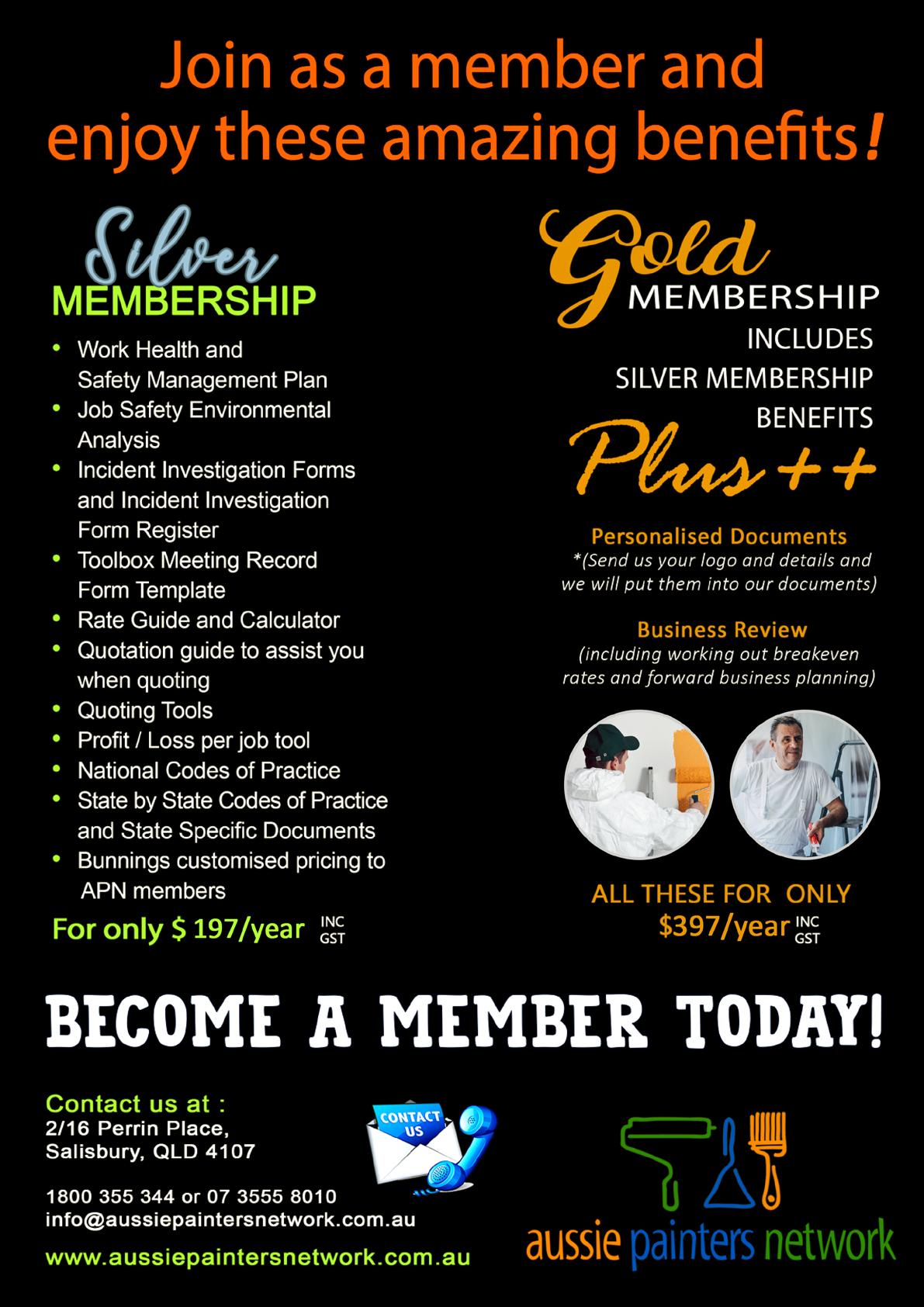


























 Copyright © 2023 Robert Bauman.
Copyright © 2023 Robert Bauman.






































 Nigel Gorman nigel@aussiepaintersnetwork.com.au
Nigel Gorman nigel@aussiepaintersnetwork.com.au











